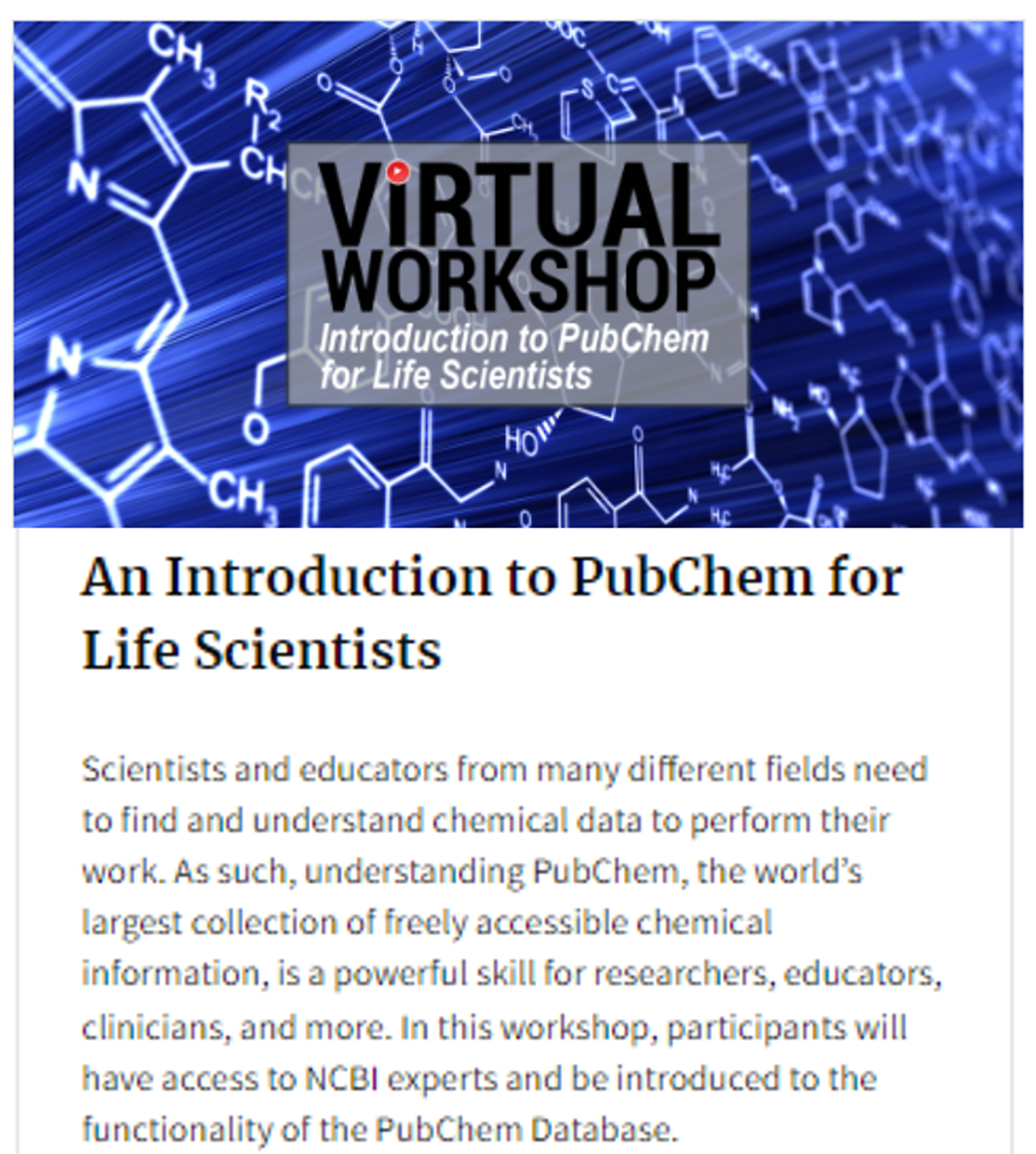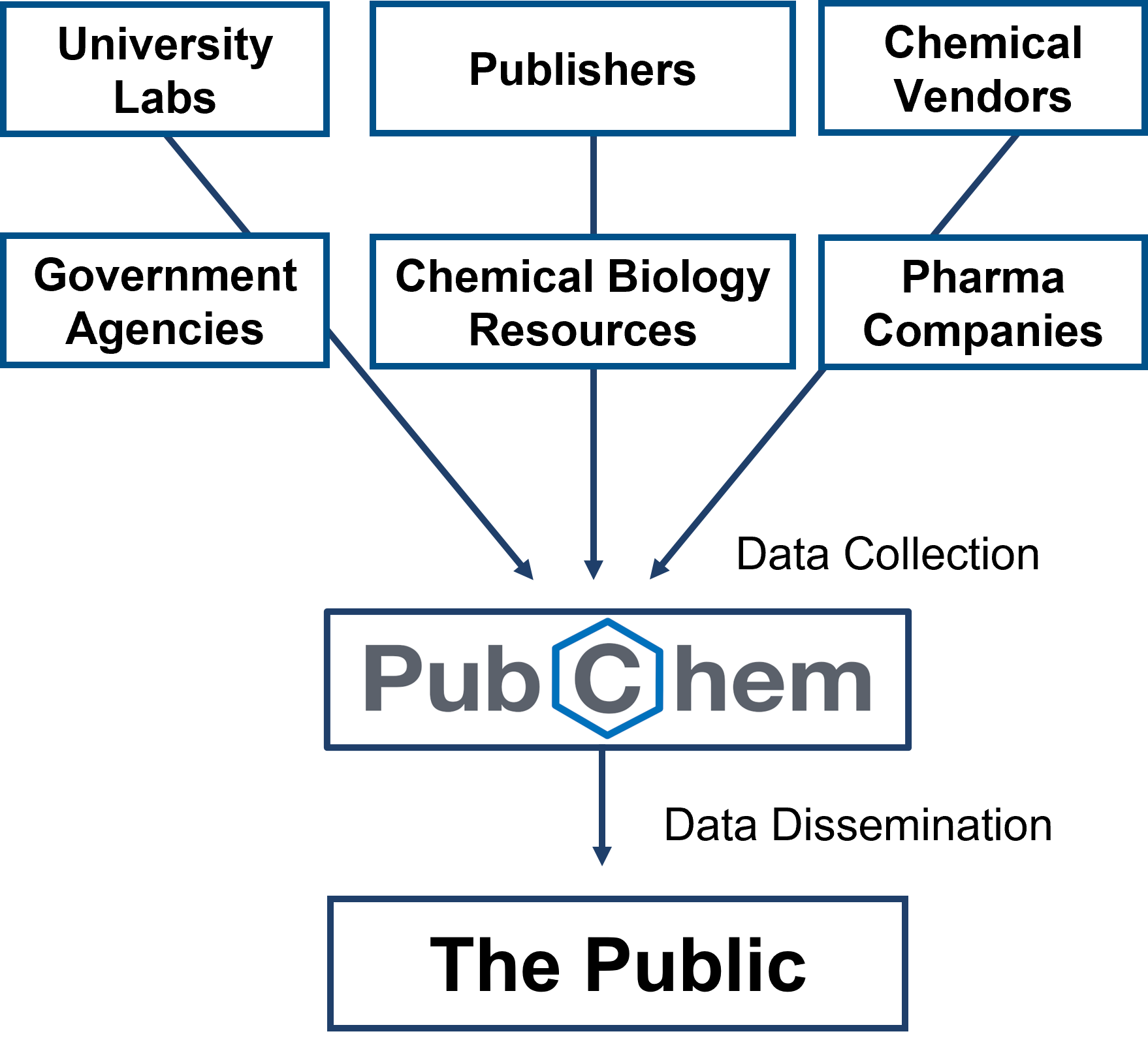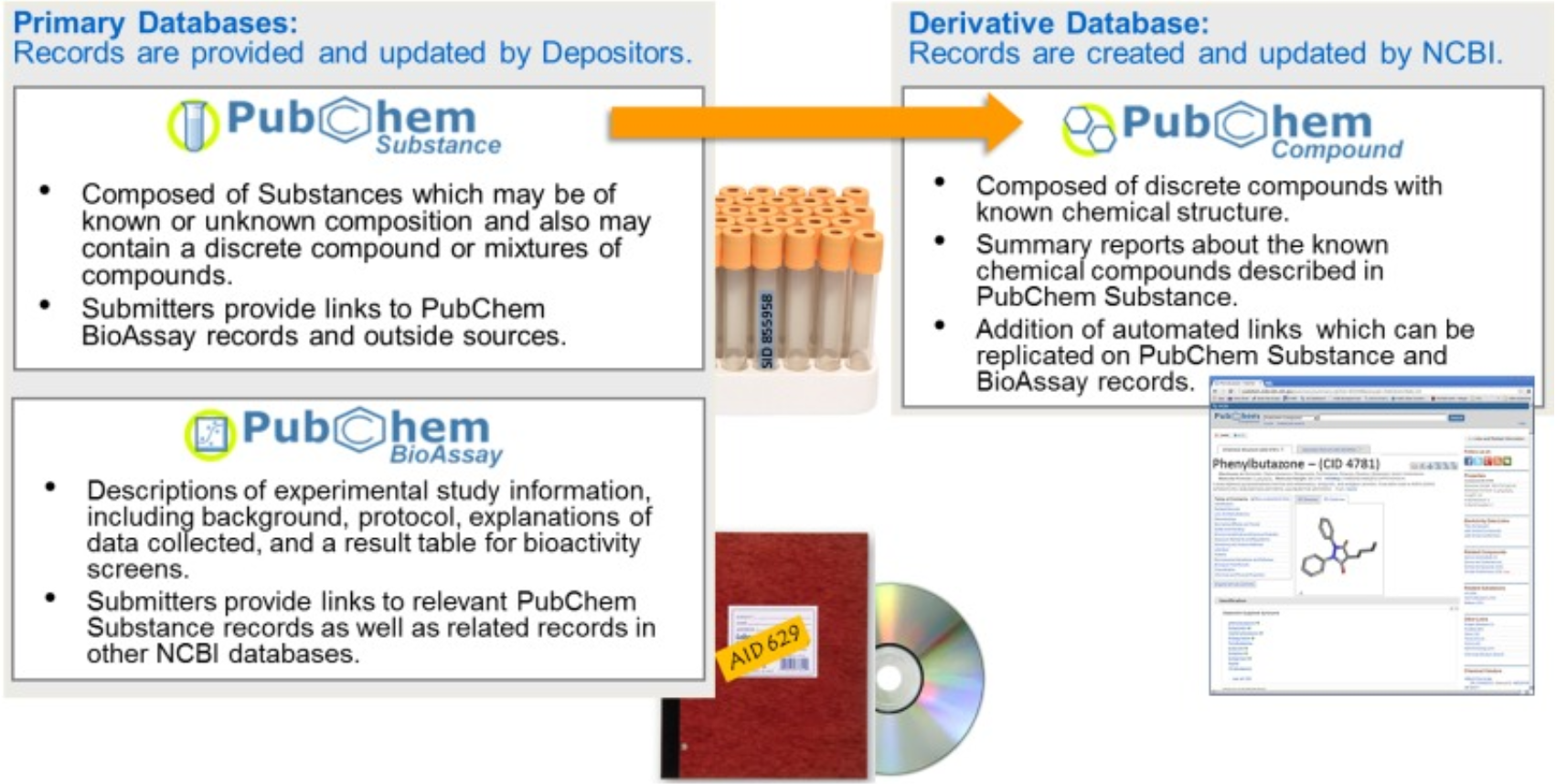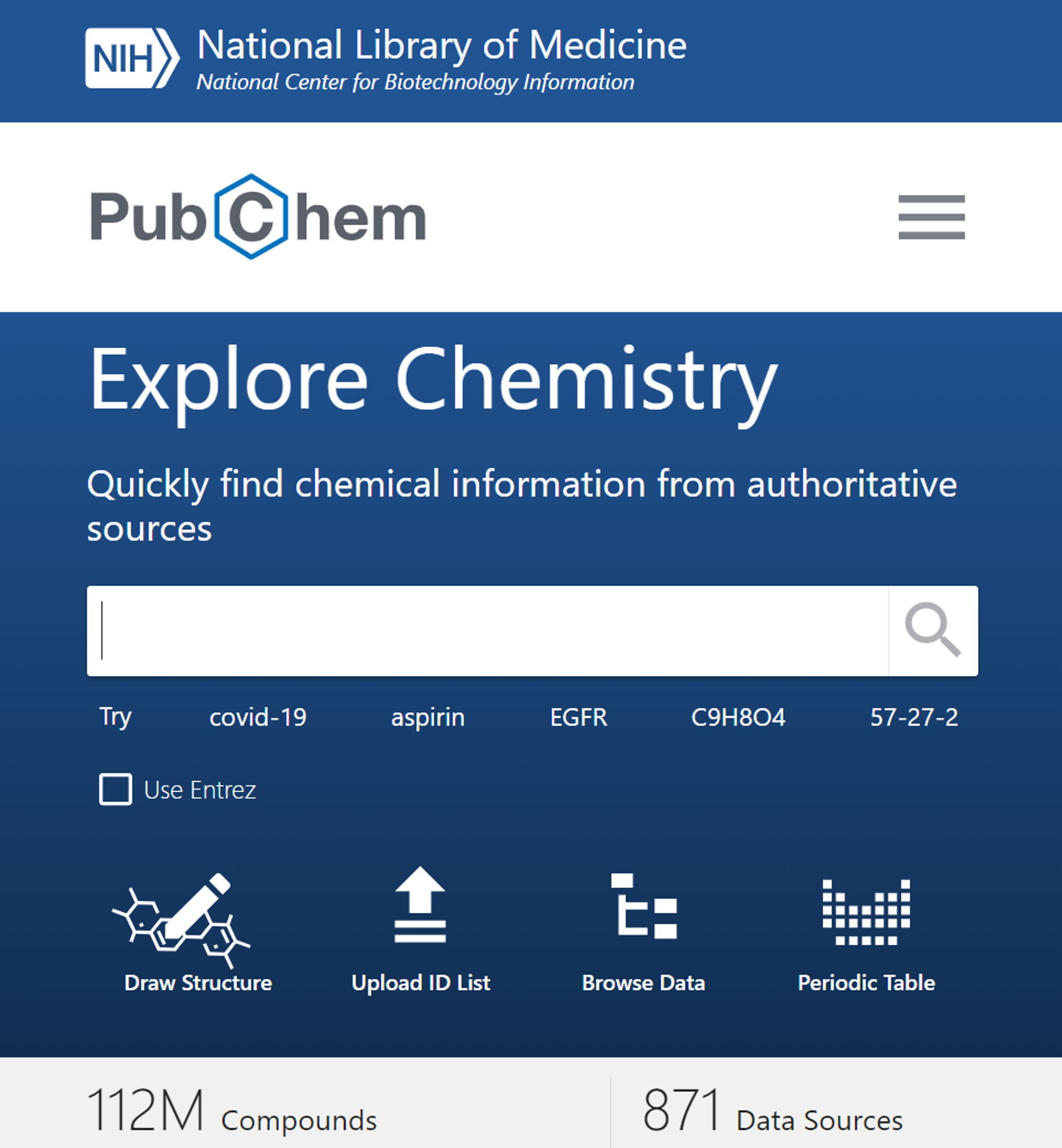Introduction

Today's Workshop:
- Background on the PubChem Project & Databases
- Searching in PubChem with text or structures
- Finding molecular & chemical safety information
- Finding a potential inhibitor for your protein

What is PubChem?
- Created in 2004 to serve as a repository for the NIH Molecular Libraries Program
- World's largest collection of freely accessible chemical information
- Key chemical information resource for scientists, students, and the public
What is in PubChem?
- Small molecules
- Larger molecules, such as:
- Nucleotides
- Carbohydrates
- Lipids
- Peptides
- Chemically-modified macromolecules
- And other related information, such as:
- Genes
- Proteins
- Pathways
- Literature
- Patents
- and more....
Why do people use PubChem data?
- Learn about a chemical or drug/medication
- Find chemical and physical properties, molecular structure, chemical safety data, etc.
- Identify sources of informaton about biological function and other data for fundamental research
- Mine data for biochemical research
- Drug discovery, drug-gene targeting, toxicology

Where does PubChem's data come from?
- Vetted Submitters and Contributors who submit data to us or permit us to pull data from their resources, respectively.
- To learn more, take a look at this Data Sources site.
- Do you have chemical or biological activity data to contribute? Learn more here.
How are PubChem's main databases organized?
- Primary databases:
- PubChem Substance - depositor-provided information (names, structures, sometimes more)
- PubChem BioAssay - depositor-provided biological activity experiments (metadata and data) which have been provided with their corresponding tested substances in the PubChem Substance database
- The main Chemical database:
- PubChem Compound - non-redundant, aggregate data (based on identical 2D-chemical structures) created by NCBI of PubChem Substance information as well as other relevant data from Contributors.
- All databases contain links to related records within each database and to relevant records in other PubChem and NCBI molecular biology and literature databases.


- On the PubChem Homepage!
- To learn more about PubChem: click on About
- For chemical information: look in PubChem Compound
- For biological activity experiment information: look in PubChem BioAssay
Last Reviewed: November 4, 2022

